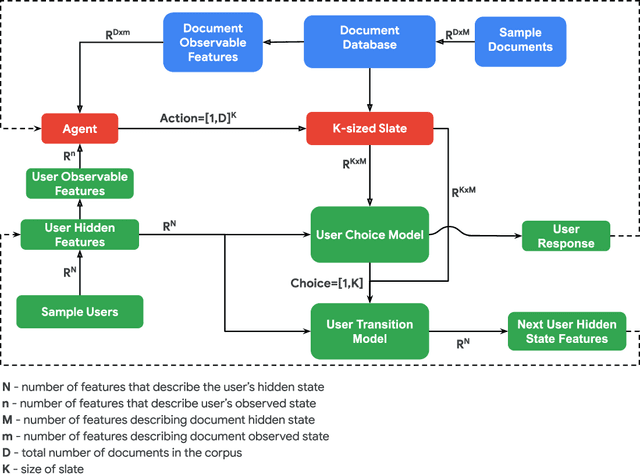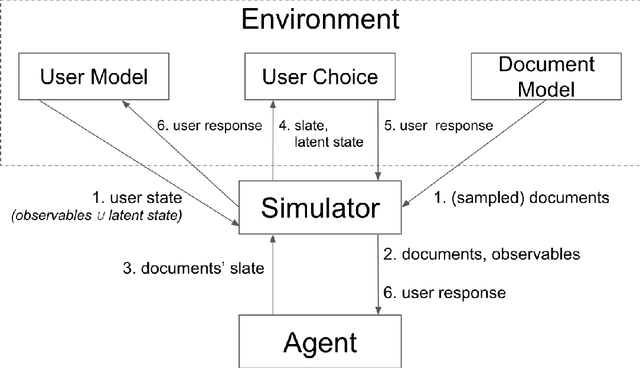Sanmit Narvekar
Curriculum Learning for Reinforcement Learning Domains: A Framework and Survey
Mar 10, 2020



Abstract:Reinforcement learning (RL) is a popular paradigm for addressing sequential decision tasks in which the agent has only limited environmental feedback. Despite many advances over the past three decades, learning in many domains still requires a large amount of interaction with the environment, which can be prohibitively expensive in realistic scenarios. To address this problem, transfer learning has been applied to reinforcement learning such that experience gained in one task can be leveraged when starting to learn the next, harder task. More recently, several lines of research have explored how tasks, or data samples themselves, can be sequenced into a curriculum for the purpose of learning a problem that may otherwise be too difficult to learn from scratch. In this article, we present a framework for curriculum learning (CL) in reinforcement learning, and use it to survey and classify existing CL methods in terms of their assumptions, capabilities, and goals. Finally, we use our framework to find open problems and suggest directions for future RL curriculum learning research.
RecSim: A Configurable Simulation Platform for Recommender Systems
Sep 26, 2019

Abstract:We propose RecSim, a configurable platform for authoring simulation environments for recommender systems (RSs) that naturally supports sequential interaction with users. RecSim allows the creation of new environments that reflect particular aspects of user behavior and item structure at a level of abstraction well-suited to pushing the limits of current reinforcement learning (RL) and RS techniques in sequential interactive recommendation problems. Environments can be easily configured that vary assumptions about: user preferences and item familiarity; user latent state and its dynamics; and choice models and other user response behavior. We outline how RecSim offers value to RL and RS researchers and practitioners, and how it can serve as a vehicle for academic-industrial collaboration.
Reinforcement Learning for Slate-based Recommender Systems: A Tractable Decomposition and Practical Methodology
May 31, 2019


Abstract:Most practical recommender systems focus on estimating immediate user engagement without considering the long-term effects of recommendations on user behavior. Reinforcement learning (RL) methods offer the potential to optimize recommendations for long-term user engagement. However, since users are often presented with slates of multiple items - which may have interacting effects on user choice - methods are required to deal with the combinatorics of the RL action space. In this work, we address the challenge of making slate-based recommendations to optimize long-term value using RL. Our contributions are three-fold. (i) We develop SLATEQ, a decomposition of value-based temporal-difference and Q-learning that renders RL tractable with slates. Under mild assumptions on user choice behavior, we show that the long-term value (LTV) of a slate can be decomposed into a tractable function of its component item-wise LTVs. (ii) We outline a methodology that leverages existing myopic learning-based recommenders to quickly develop a recommender that handles LTV. (iii) We demonstrate our methods in simulation, and validate the scalability of decomposed TD-learning using SLATEQ in live experiments on YouTube.
Learning Curriculum Policies for Reinforcement Learning
Dec 01, 2018



Abstract:Curriculum learning in reinforcement learning is a training methodology that seeks to speed up learning of a difficult target task, by first training on a series of simpler tasks and transferring the knowledge acquired to the target task. Automatically choosing a sequence of such tasks (i.e. a curriculum) is an open problem that has been the subject of much recent work in this area. In this paper, we build upon a recent method for curriculum design, which formulates the curriculum sequencing problem as a Markov Decision Process. We extend this model to handle multiple transfer learning algorithms, and show for the first time that a curriculum policy over this MDP can be learned from experience. We explore various representations that make this possible, and evaluate our approach by learning curriculum policies for multiple agents in two different domains. The results show that our method produces curricula that can train agents to perform on a target task as fast or faster than existing methods.
 Add to Chrome
Add to Chrome Add to Firefox
Add to Firefox Add to Edge
Add to Edge